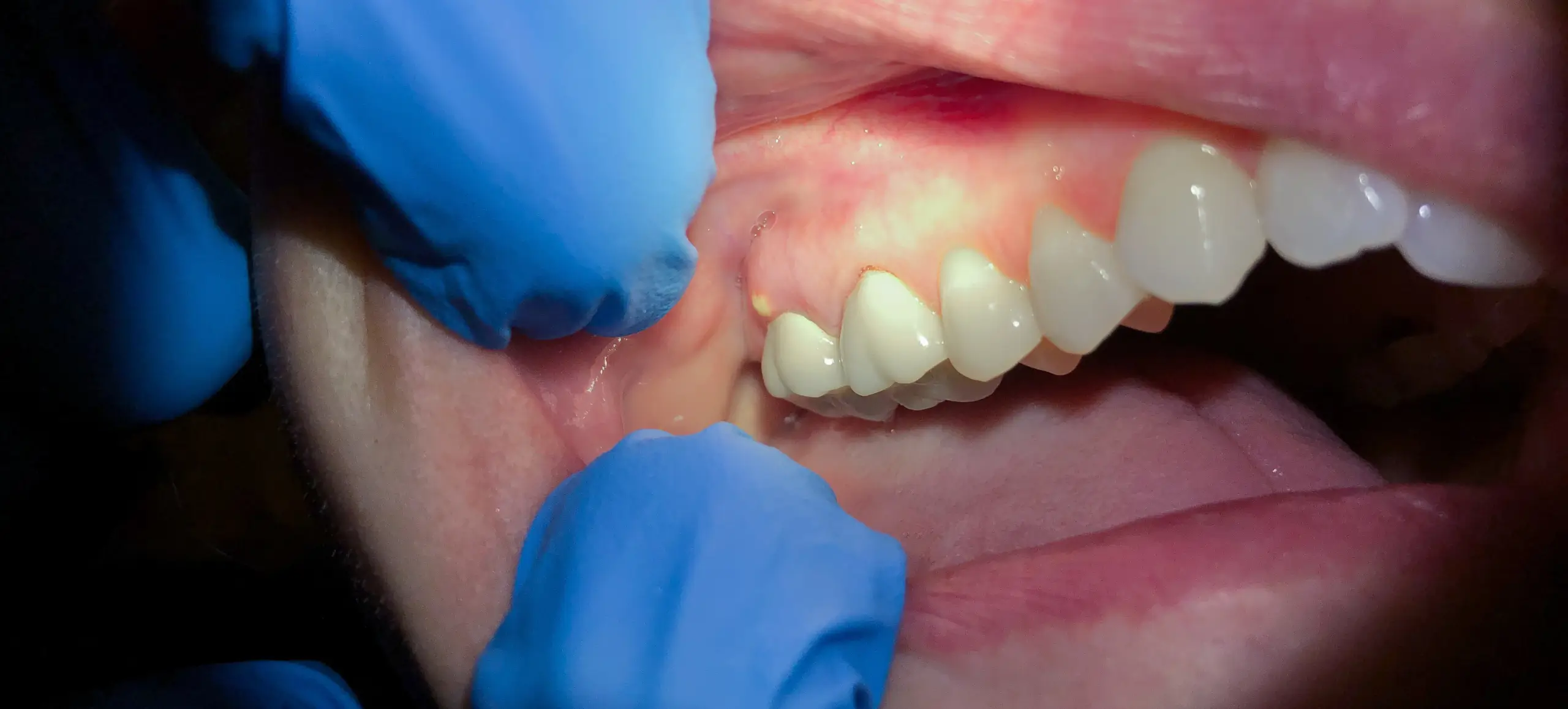Tooth extractions are common dental procedures. They help to remove damaged or infected teeth. Sometimes, an abscess forms before or after the extraction. Understanding what happens to the abscess after a tooth extraction is crucial for proper oral care. This article will cover everything you need to know about an abscess after tooth extraction, from identification to treatment.
What’s an Abscess?
A dental abscess is a pocket in your teeth which is filled with pus. This forms because of bacterial infection. It can form in different parts of the body, including around teeth. In the mouth, abscesses usually occur because of tooth decay, gum disease, or trauma. The body’s immune system sends white blood cells to fight the infection. This process results in the formation of pus, a thick fluid containing dead tissue, bacteria, and white blood cells.
Types of Abscesses
Dental abscesses are mainly three types:
- Periapical Abscess: This type forms at the tip of a tooth’s root. It usually results from an untreated cavity.
- Periodontal Abscess: This abscess occurs in the gums next to a tooth root. It often results from gum disease.
- Gingival Abscess: This abscess forms in the gums without affecting the tooth or its root. It might occur due to trauma or a foreign object stuck in the gums.
What Happens to the Abscess After a Tooth is Pulled Out
When a tooth with an abscess is pulled out, the source of the infection is removed. This allows the body to start healing. The pus-filled abscess may drain on its own after the extraction. The dentist might also clean out the abscess during the procedure. However, the surrounding tissue still needs time to heal completely.
The hole left by the tooth, known as the socket, starts to fill with blood, forming a clot. This clot is crucial for the healing process. It prevents bacteria from entering the wound and causing another infection. Over time, new tissue grows over the clot, and the socket closes up. The healing process can take several weeks to a few months, depending on the individual’s health and oral hygiene.
Symptoms of an Infection After Having a Tooth Removed
While healing, it’s essential to watch for signs of infection. An infection after tooth extraction can be serious. Here are some common symptoms:
- Severe or worsening pain that doesn’t go away with painkillers.
- Swelling around the extraction site or face.
- Redness or warmth in the gums or cheek.
- A foul taste in the mouth or bad breath.
- Pus draining from the extraction site.
- Fever or chills.
- Swollen lymph nodes in the neck.
Always remember prompt treatment can prevent complications and speed up healing. Thus if you see or observe any of the symptoms mentioned contact your dentist ASAP.
Abscess Formation After Tooth Extraction
Sometimes, an abscess can form after a tooth extraction. This can occur if bacteria enter the extraction site, causing an infection. Poor oral hygiene, smoking, or underlying health conditions can increase the risk. The formation of an abscess after extraction can cause pain and delay the healing process.
To minimize the risk of abscess formation:
- Follow the dentist’s post-extraction care instructions.
- Keep the extraction site clean.
- Avoid smoking and alcohol.
- Eat soft foods and avoid chewing on the extraction site.
- Use a saltwater rinse to reduce bacteria in the mouth.
How To Treat a Dental Abscess?
Treating a dental abscess involves removing the infection and relieving pain. Here are common treatments:
- Drainage: The dentist may make a small cut in the abscess to drain the pus. This reduces pressure and pain.
- Antibiotics: These help to kill the bacteria causing the infection. Antibiotics help stop the infection from spreading.
- Pain Relievers: Over-the-counter painkillers can help manage pain. In some cases, the dentist may prescribe stronger pain relief.
- Warm Saltwater Rinse: Rinsing the mouth with warm salt water several times a day can help keep the area clean and reduce pain.
Does a Tooth Extraction Get Rid of an Abscess?
A tooth extraction can remove the source of the infection, but it may not immediately resolve the abscess. The body requires time to heal the affected area. In some cases, the abscess might persist and need additional treatment. It’s crucial to follow all post-extraction care instructions and attend follow-up appointments with your dentist.
What to Do if You Get an Infection After Tooth Extraction?
If you find an infection after a tooth extraction, seek dental care immediately. Quick action can prevent severe complications. Here’s what to do:
- Contact Your Dentist: Explain your symptoms and follow their advice.
- Take Prescribed Medication: If the dentist prescribes antibiotics, take them as directed.
- Maintain Oral Hygiene: Keep your mouth clean, but be gentle around the extraction site.
- Use Pain Relief: Over-the-counter painkillers can help manage discomfort.
- Stay Hydrated: Drink plenty of water to help your body fight the infection.
- Rest: Give your body required time to heal by getting much needed rest.
Final Thoughts on Abscess After Tooth Extraction
An abscess after tooth extraction can be worrisome, but remember understanding the process helps in managing it effectively. Knowing the types of abscesses, what happens after extraction, and how to recognize and treat infections can ensure better oral health. Always follow your dentist’s advice and maintain good oral hygiene to prevent complications. If you experience any symptoms of infection, seek dental care promptly to ensure a smooth and quick recovery.

